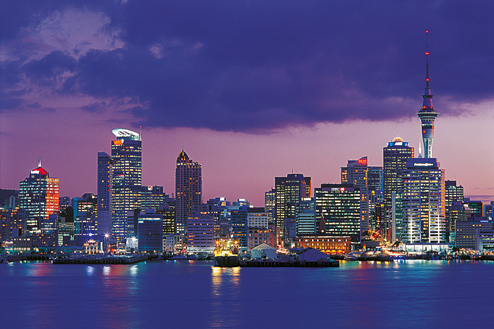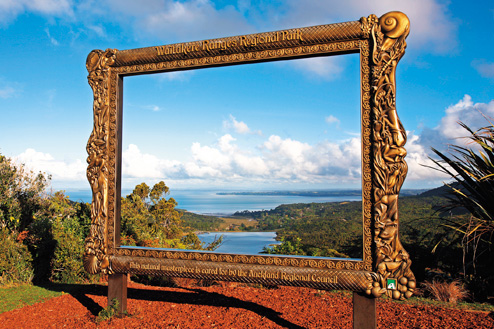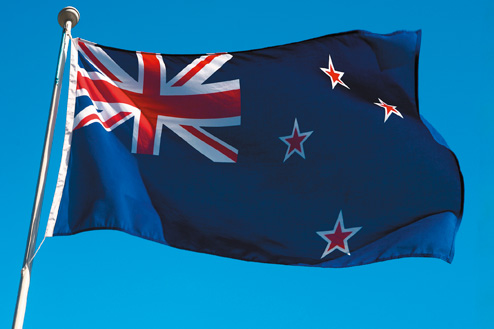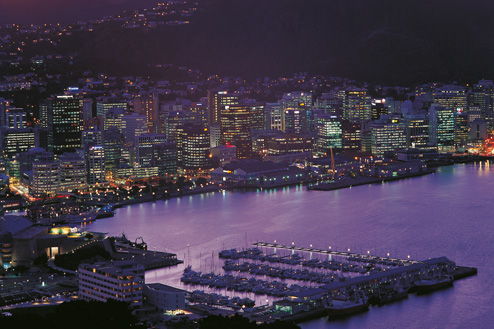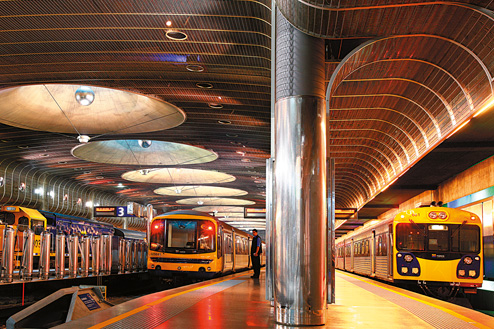New Allegiances
World war two’s impact on the Pacific was felt with the bombing of Pearl Harbour in 1941, an act that brought New Zealand into military allegiance with the USA for the first time. It began a process of political repositioning that was cemented with the signing of the ANZUS alliance (a policy of mutual defence between New Zealand, Australia and the US), in 1951.
Back home, political changes led to huge social upheaval. The National Party sparked a wave of union protest following the establishment of its conservative government in 1949, culminating in 1951’s Waterfront Lockout, the most widespread industrial dispute in the country’s history. More than 20,000 workers
went on strike in support of the dockers in a dispute that lasted 151 days, and eventually broke much of the power of New Zealand’s mighty unions.
None of which stopped a wave of British immigrants moving to New Zealand. In the years between 1947 and 1975, 77,000 so-called ‘10 pound Poms’ (named after the average cost of their passage) made their way to New Zealand to seek work and escape the restrictions of post-war rationing.
At the same time, promises of employment were luring Maori citizens into the cities like never before. But the struggle to find work equal to that of their Pakeha contemporaries created anger and disillusionment. Disparity and discrimination led to a rise in Maori gang culture and disproportionate representation in prison.
The Maori community became freshly politicised, staging occupations of traditional land at Raglan and Auckland’s Bastion Point. In 1975, the Waitangi Tribunal was established to investigate Maori claims to land.
Race relations took on an international hue in the 1970s too, not only with the first major wave of immigration from Polynesia (namely Tonga, Samoa and the Cook Islands), but with the 1976 rugby tour of apartheid South Africa, where the All Blacks played against racially selected teams. African nations demonstrated their disapproval by boycotting the Montreal Olympics. The New Zealand government responded by signing the 1977 anti-apartheid Gleneagles Agreement, but falling foul of the public mood again by sanctioning the 1981 Springbok tour to New Zealand.
New Zealand’s international reputation for social politics was more assured but was tested in 1985. The Rainbow Warrior, an anti-nuclear protest ship operated by Greenpeace, was bombed while docked in Auckland’s Waitemata Harbour. The year before, Labour Prime Minister David Lange had refused US ships entry into NZ harbours unless they declared themselves nuclear-free. This stance had toppled the longstanding ANZUS defence pact and a year after the bombing, New Zealand was officially declared a nuclear-free Zone.
Back home, political changes led to huge social upheaval. The National Party sparked a wave of union protest following the establishment of its conservative government in 1949, culminating in 1951’s Waterfront Lockout, the most widespread industrial dispute in the country’s history. More than 20,000 workers
went on strike in support of the dockers in a dispute that lasted 151 days, and eventually broke much of the power of New Zealand’s mighty unions.
None of which stopped a wave of British immigrants moving to New Zealand. In the years between 1947 and 1975, 77,000 so-called ‘10 pound Poms’ (named after the average cost of their passage) made their way to New Zealand to seek work and escape the restrictions of post-war rationing.
At the same time, promises of employment were luring Maori citizens into the cities like never before. But the struggle to find work equal to that of their Pakeha contemporaries created anger and disillusionment. Disparity and discrimination led to a rise in Maori gang culture and disproportionate representation in prison.
The Maori community became freshly politicised, staging occupations of traditional land at Raglan and Auckland’s Bastion Point. In 1975, the Waitangi Tribunal was established to investigate Maori claims to land.
Race relations took on an international hue in the 1970s too, not only with the first major wave of immigration from Polynesia (namely Tonga, Samoa and the Cook Islands), but with the 1976 rugby tour of apartheid South Africa, where the All Blacks played against racially selected teams. African nations demonstrated their disapproval by boycotting the Montreal Olympics. The New Zealand government responded by signing the 1977 anti-apartheid Gleneagles Agreement, but falling foul of the public mood again by sanctioning the 1981 Springbok tour to New Zealand.
New Zealand’s international reputation for social politics was more assured but was tested in 1985. The Rainbow Warrior, an anti-nuclear protest ship operated by Greenpeace, was bombed while docked in Auckland’s Waitemata Harbour. The year before, Labour Prime Minister David Lange had refused US ships entry into NZ harbours unless they declared themselves nuclear-free. This stance had toppled the longstanding ANZUS defence pact and a year after the bombing, New Zealand was officially declared a nuclear-free Zone.

